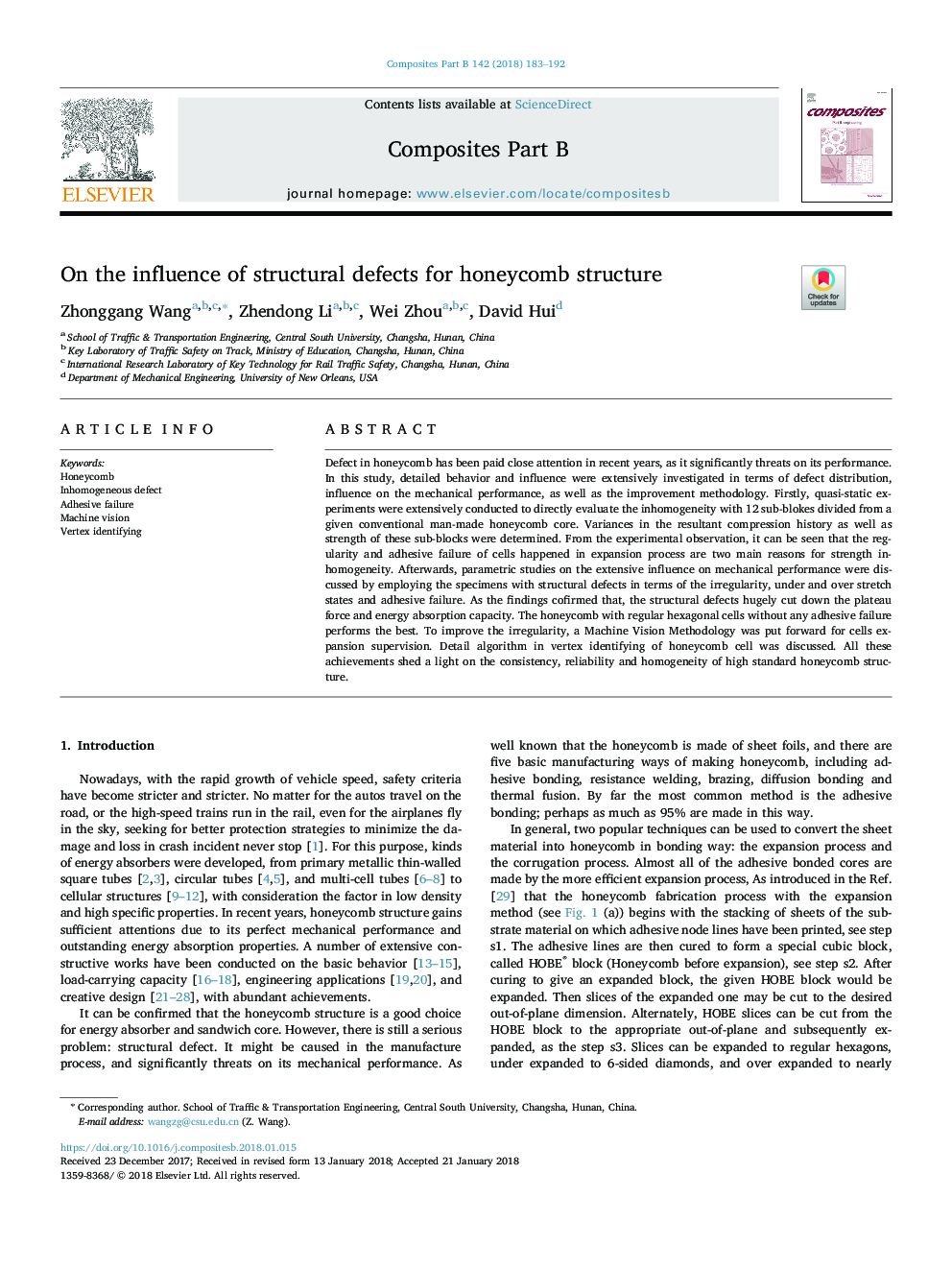| Article ID | Journal | Published Year | Pages | File Type |
|---|---|---|---|---|
| 7212146 | Composites Part B: Engineering | 2018 | 10 Pages |
Abstract
Defect in honeycomb has been paid close attention in recent years, as it significantly threats on its performance. In this study, detailed behavior and influence were extensively investigated in terms of defect distribution, influence on the mechanical performance, as well as the improvement methodology. Firstly, quasi-static experiments were extensively conducted to directly evaluate the inhomogeneity with 12 sub-blokes divided from a given conventional man-made honeycomb core. Variances in the resultant compression history as well as strength of these sub-blocks were determined. From the experimental observation, it can be seen that the regularity and adhesive failure of cells happened in expansion process are two main reasons for strength inhomogeneity. Afterwards, parametric studies on the extensive influence on mechanical performance were discussed by employing the specimens with structural defects in terms of the irregularity, under and over stretch states and adhesive failure. As the findings cofirmed that, the structural defects hugely cut down the plateau force and energy absorption capacity. The honeycomb with regular hexagonal cells without any adhesive failure performs the best. To improve the irregularity, a Machine Vision Methodology was put forward for cells expansion supervision. Detail algorithm in vertex identifying of honeycomb cell was discussed. All these achievements shed a light on the consistency, reliability and homogeneity of high standard honeycomb structure.
Related Topics
Physical Sciences and Engineering
Engineering
Engineering (General)
Authors
Zhonggang Wang, Zhendong Li, Wei Zhou, David Hui,
